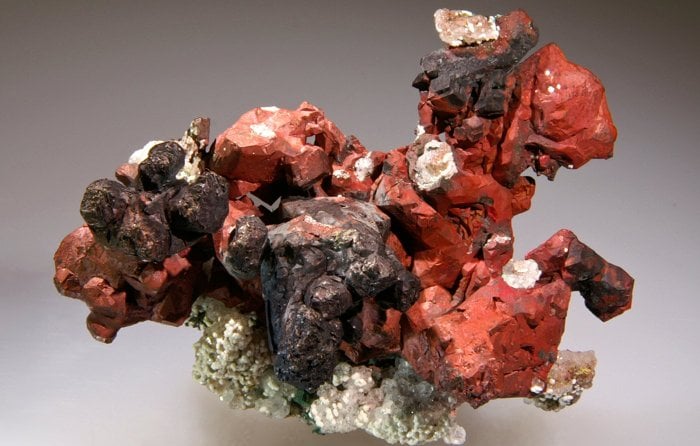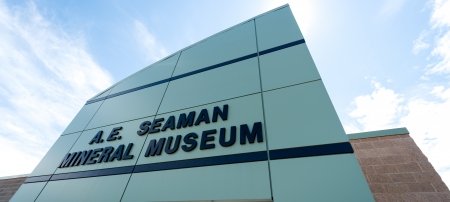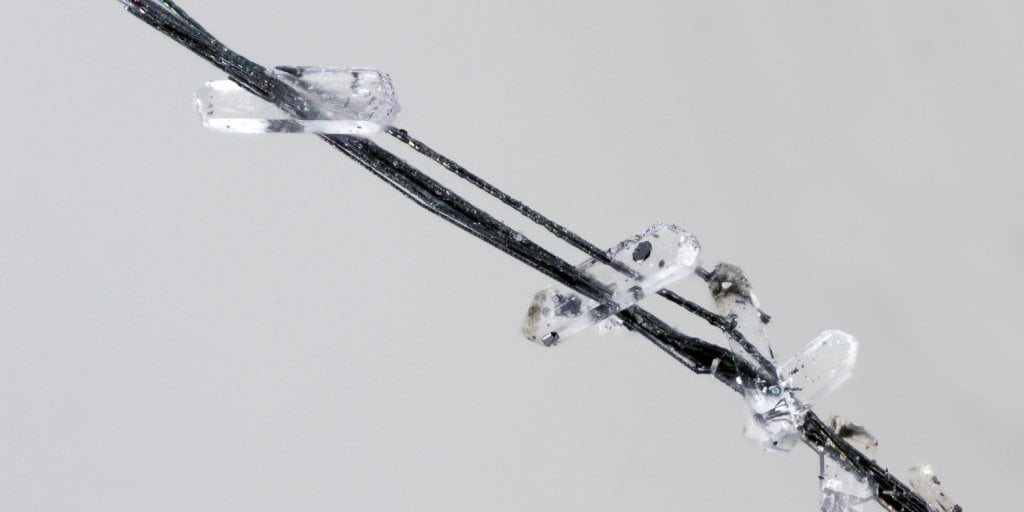Two Universities Collaborate to Preserve Historic Mineral Collection for the People of Michigan

Two leading Michigan universities have joined hands to preserve the legacy of a historic mineral collection.
The University of Michigan’s mineral collection—including some of the finest specimens of particular significance to Michigan—will have a new home at the A. E. Seaman Mineral Museum at Michigan Technological University. The museum is the official mineral museum of the state of Michigan.
“We couldn’t be more excited about this collaboration,” said Glenn Mroz, Michigan Tech president. “This is a perfect example of state universities working together for the benefit of all the people of Michigan.”
The Michigan Tech mineral museum will curate and exhibit the University of Michigan collection. In addition to a permanent exhibit at the museum in Houghton, the specimens will be exhibited at mineral shows around the country, as well as in satellite locations. One of these satellites will be on the campus of the University of Michigan, an exhibit that will be maintained by Michigan Tech’s mineral museum. This unique arrangement provides for shared ownership and responsibility to preserve the legacy of the University of Michigan mineral collection into the foreseeable future.
University of Michigan Mineral Collection
“The University of Michigan has a long and distinguished mineral legacy,” said Ted Bornhorst, professor of geological and mining engineering and sciences at Michigan Tech and executive director of the A. E. Seaman Mineral Museum. “Part of our core mission is to preserve minerals for future generations and educate people about the importance of minerals to society. Preserving the University of Michigan mineral collection at the official mineral museum of Michigan is a natural fit with our mission.”
The A. E. Seaman Mineral Museum already has a nationally recognized mineral collection, containing the finest collection of Michigan minerals, the largest public exhibit of minerals from the Great Lakes region, and outstanding specimens from around the world. “The University of Michigan mineral collection will add quality, depth and breadth to our holdings,” Bornhorst said.
He called the collaboration “groundbreaking,” saying, “This is a permanent win-win connection for our two institutions.”
According to Chris Poulsen, professor and chair of the College of Literature, Science, and the Arts’ Department of Earth and Environmental Sciences at the University of Michigan, the mineral collection is “an extraordinary asset that showcases Michigan’s mineral wealth and the history of mineral exploration within the state and by University of Michigan professors.
“We are very excited about the new collaboration between the University of Michigan and Michigan Tech to conserve and display the [University of] Michigan mineral collection that, in recent decades, has not been accessible to the public,” Poulsen said. “We are fortunate to partner with Michigan Tech’s A. E. Seaman Mineral Museum to preserve its legacy and to ensure that the collection gets the attention that it rightfully deserves.”
Rod Ewing, Edward H. Kraus Distinguished Professor Emeritus of Geological Sciences at the University of Michigan and an internationally recognized mineralogist, played a key role in setting the stage for development of the collaboration between the University of Michigan and Michigan Tech. Ewing initiated and supervised a comprehensive assessment of the collection as a prelude to recommending that the legacy be preserved at Michigan Tech’s official state mineral museum.
That legacy goes back to the early days of the University of Michigan when, in 1837, the university moved to Ann Arbor and Michigan became a state. The U-M mineral collection began a year later, in 1838, when the Board of Regents purchased the mineral collection of European Baron Louis Lederer, dating to the late 18th and early 19th centuries.
Douglass Houghton Specimens
The collection also includes specimens collected by Douglass Houghton, the first state geologist and the second professor hired by the University of Michigan. The city of Houghton—home of the A. E. Seaman Mineral Museum—was named for him.
The collection contains some world-class specimens, including a rare cut and polished stalactite from a cave found in Sardinia, Italy in the late 1800s, a world-class stibnite from the Island of Shikoku, Japan, acquired in 1916, and unique copper pieces from the Quincy Mine, the Phoenix Mine, and elsewhere on the Keweenaw Peninsula of Michigan.
A small sampling of the historically significant University of Michigan mineral collection is now on public exhibit at the A. E. Seaman Mineral Museum in Houghton.
Michigan Technological University is an R1 public research university founded in 1885 in Houghton, and is home to nearly 7,500 students from more than 60 countries around the world. Consistently ranked among the best universities in the country for return on investment, Michigan's flagship technological university offers more than 185 undergraduate and graduate degree programs in science and technology, engineering, computing, forestry, business, health professions, humanities, mathematics, social sciences, and the arts. The rural campus is situated just miles from Lake Superior in Michigan's Upper Peninsula, offering year-round opportunities for outdoor adventure.




Comments